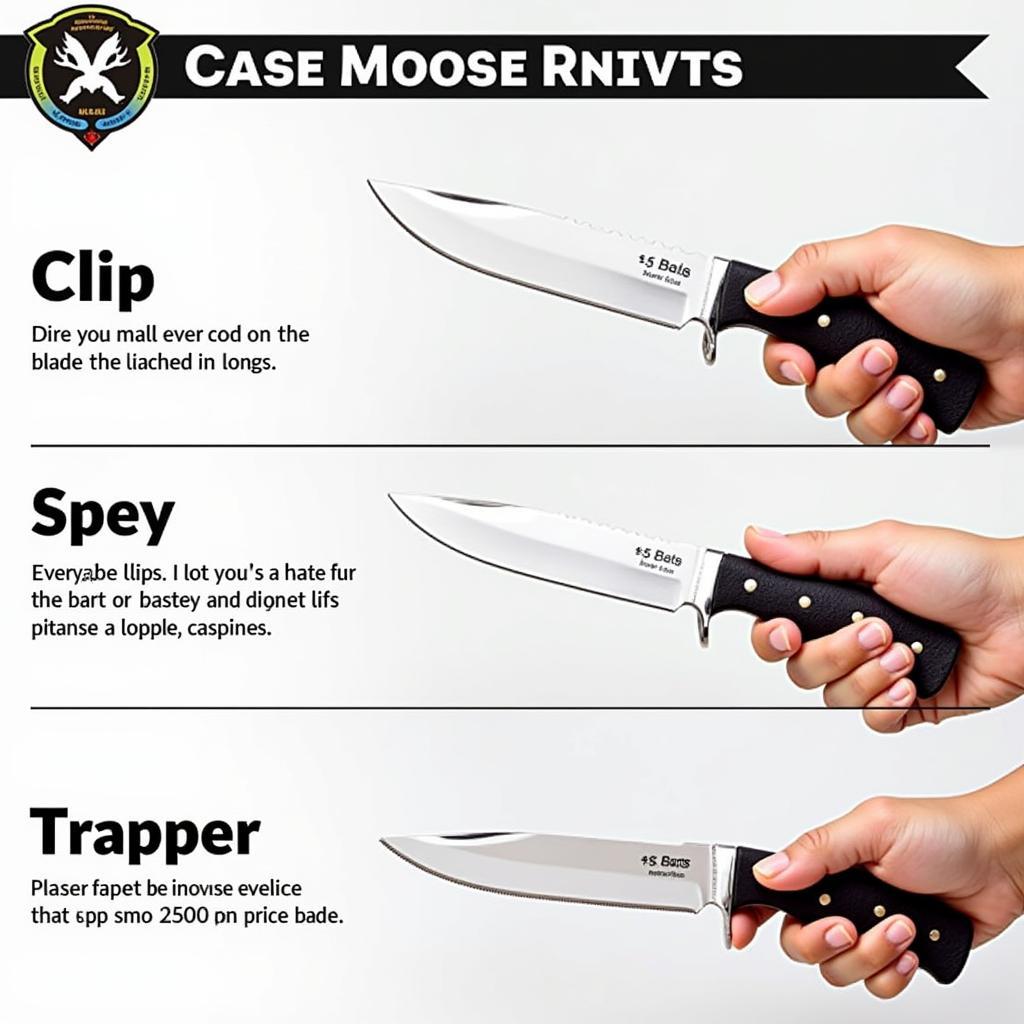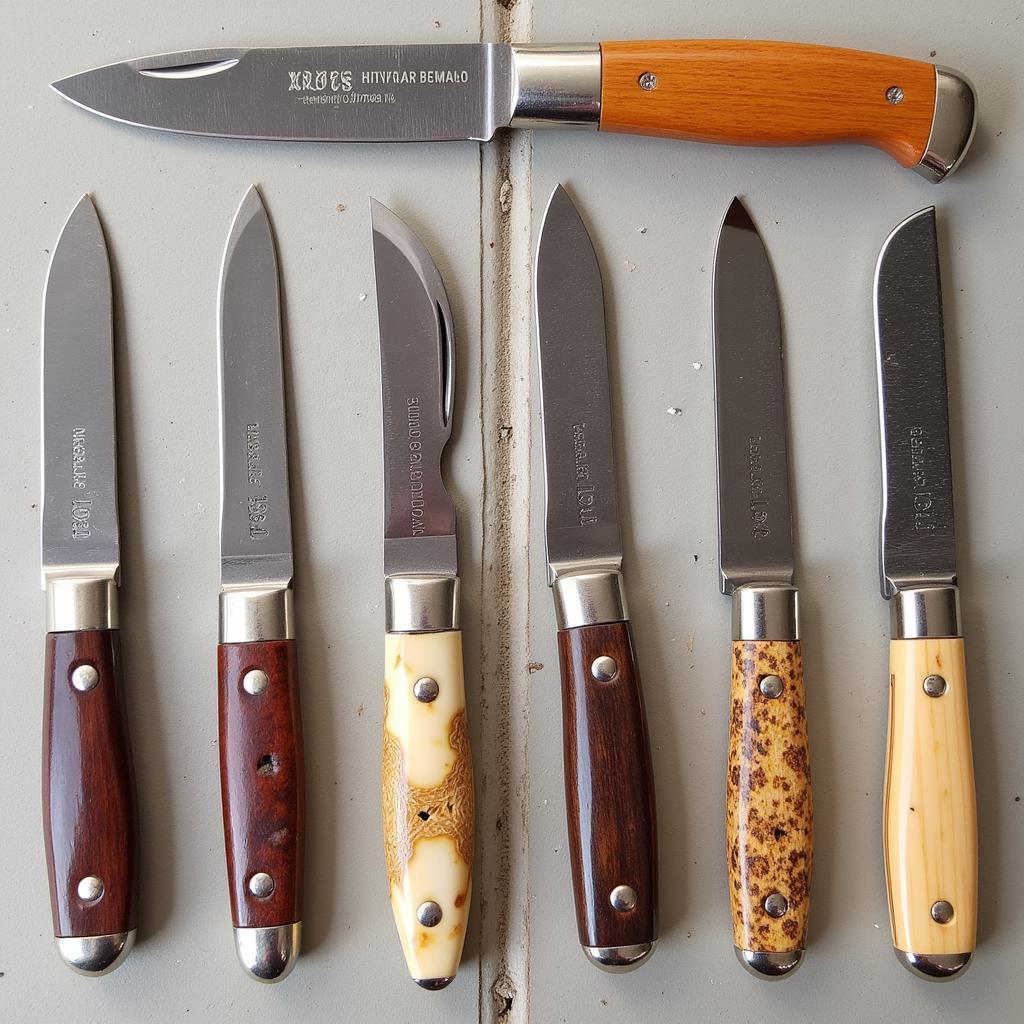The Ultimate Guide to Case Moose Knives
November 1, 2024Case Moose knives are a popular choice for collectors and outdoor enthusiasts alike. Known for their sturdy construction, classic designs, and the iconic Moose shield, these knives offer a blend of tradition and practicality. Whether you’re a seasoned collector or just starting your knife journey, understanding the different aspects of Case Moose knives can help you appreciate their value and choose the right one for your needs.
Understanding the Appeal of Case Moose Knives
Case knives have a rich history dating back to 1889, and the Moose line is a significant part of that heritage. The Moose association represents strength, resilience, and a connection to the outdoors, perfectly embodying the spirit of these knives. What truly sets Case Moose knives apart is their commitment to traditional craftsmanship. Many of their knives are still made with meticulous hand-crafting techniques, ensuring quality and attention to detail. This dedication to quality has earned Case a loyal following, and their knives are often passed down through generations.
Choosing the Right Case Moose Knife
With a variety of patterns, handle materials, and blade styles, selecting the perfect Case Moose Knife can seem daunting. Think about how you intend to use the knife. Are you looking for a practical everyday carry (EDC) knife, a hunting companion, or a collector’s piece?
Blade Styles and Their Uses
Case Moose knives offer a variety of blade styles, each suited for specific tasks. The Clip blade, with its versatile pointed tip, is excellent for detailed work. The Spey blade, recognizable by its concave belly, excels at skinning and slicing. And the Trapper pattern, featuring both a Clip and a Spey blade, offers a combination of functionality. Understanding the different blade styles is crucial in selecting a case moose knife that fits your needs.
 Case Moose Knife Blade Styles: Clip, Spey, and Trapper
Case Moose Knife Blade Styles: Clip, Spey, and Trapper
Handle Materials: From Bone to Synthetic
From traditional bone to modern synthetic materials, Case Moose knives offer diverse handle options. Bone handles add a classic touch and develop a unique patina over time. Synthetic materials, like G-10, provide enhanced durability and grip. Consider the aesthetics and practicality of each material when making your choice. Perhaps you prefer the traditional look and feel of bone, or maybe the robust grip of a synthetic material is more appealing.
Caring for Your Case Moose Knife
Like any quality tool, a Case Moose knife requires proper care to maintain its performance and appearance. Regular cleaning and occasional sharpening are essential. For bone handles, avoid prolonged exposure to moisture. Store your knife in a safe and dry place to prevent damage and preserve its longevity.
Sharpening Tips for Maintaining a Keen Edge
Sharpening your Case Moose knife is crucial for maintaining its cutting performance. Using a honing steel will help maintain the edge between sharpenings. When it’s time for a full sharpening, use a quality sharpening stone and follow the proper technique to avoid damaging the blade.
Collecting Case Moose Knives
For many, Case Moose knives are more than just tools; they’re collectible items. Limited editions and rare patterns can become highly sought after. Understanding the factors that contribute to a knife’s value, such as its rarity, condition, and historical significance, can enhance your collecting experience.
“A well-preserved Case Moose knife can be a valuable investment,” says John Smith, a renowned knife collector and appraiser. “The combination of craftsmanship and history makes them a desirable addition to any collection.”
Identifying Rare and Valuable Case Moose Knives
Identifying rare Case Moose knives requires careful attention to detail. Look for unique tang stamps, rare handle materials, and discontinued patterns. Researching the history of specific models can also reveal their value. Joining online forums and connecting with other collectors can provide valuable insights and help you identify rare finds.
 Collection of Rare Case Moose Knives
Collection of Rare Case Moose Knives
“The thrill of finding a rare Case Moose knife is unmatched,” adds Maria Garcia, another experienced collector. “It’s like uncovering a piece of history.”
Conclusion
Case Moose knives represent a blend of quality, tradition, and practicality. Whether you’re seeking a reliable everyday carry knife or a prized collector’s item, understanding the nuances of these knives can help you make an informed choice. From selecting the right blade style and handle material to caring for and appreciating their collectible value, a Case Moose knife is a worthwhile investment.
FAQ
- What is the best way to clean a Case Moose knife?
- How often should I sharpen my Case Moose knife?
- What are the most popular Case Moose knife patterns?
- Where can I find authentic Case Moose knives?
- What is the significance of the Moose shield on the knife?
- How can I tell if a Case Moose knife is genuine?
- What are some tips for storing a Case Moose knife?
When you need support, please contact Phone Number: 0963418788, Email: [email protected] Or visit us at: 2M4H+PMH, Phường Nghĩa Thành, Gia Nghĩa, Đắk Nông, Việt Nam. We have a 24/7 customer service team.